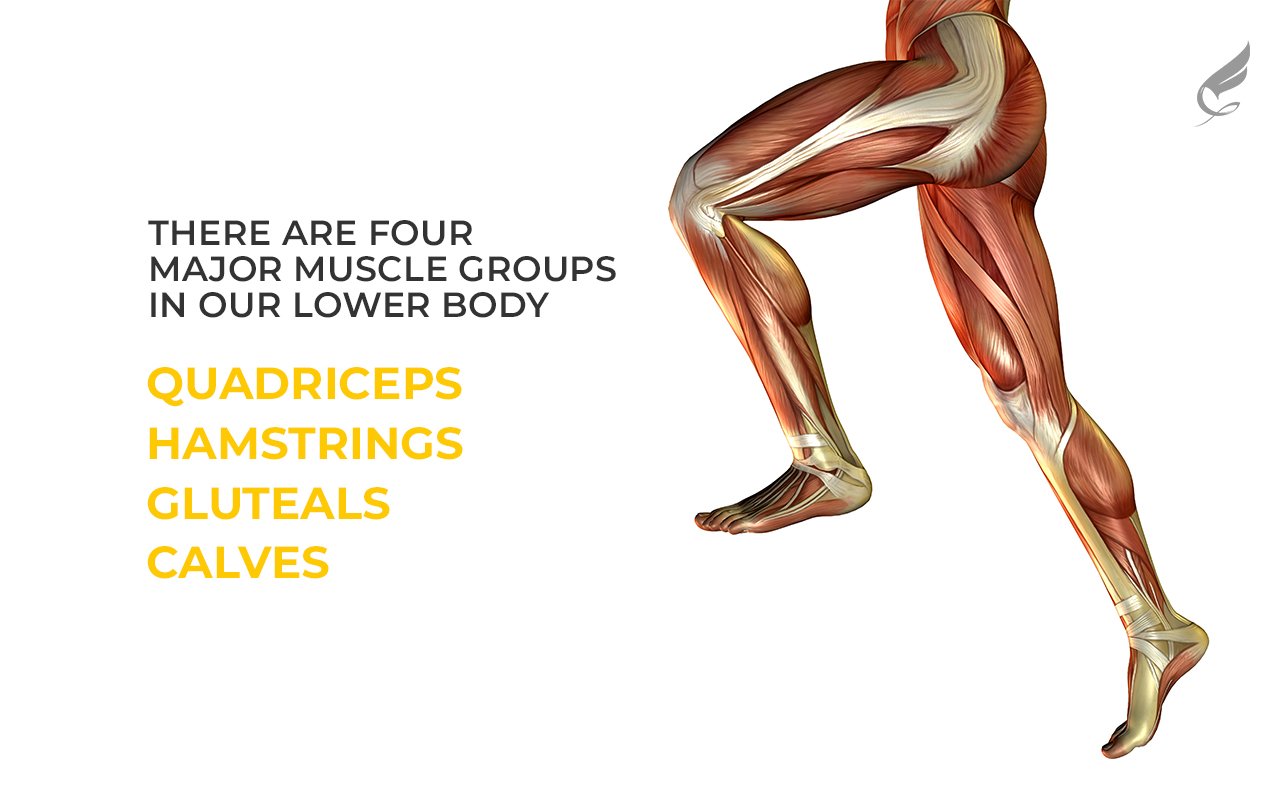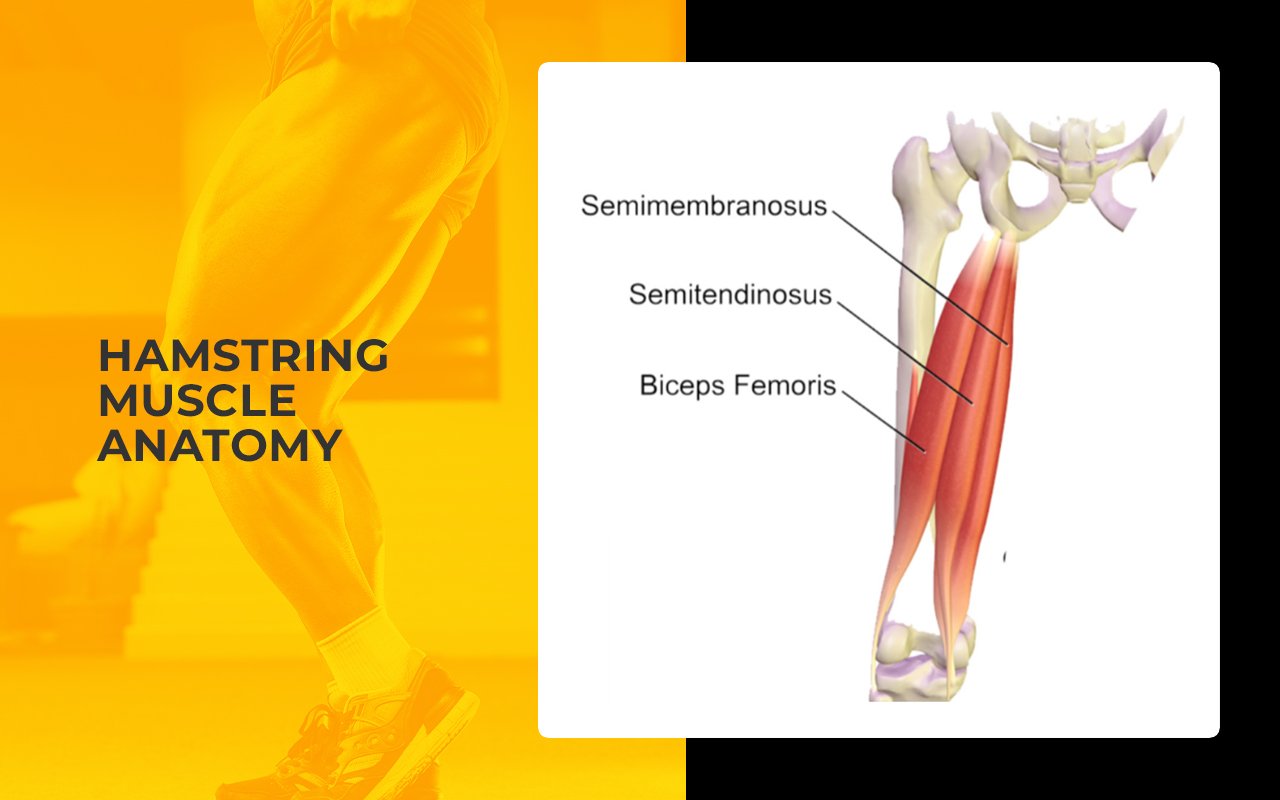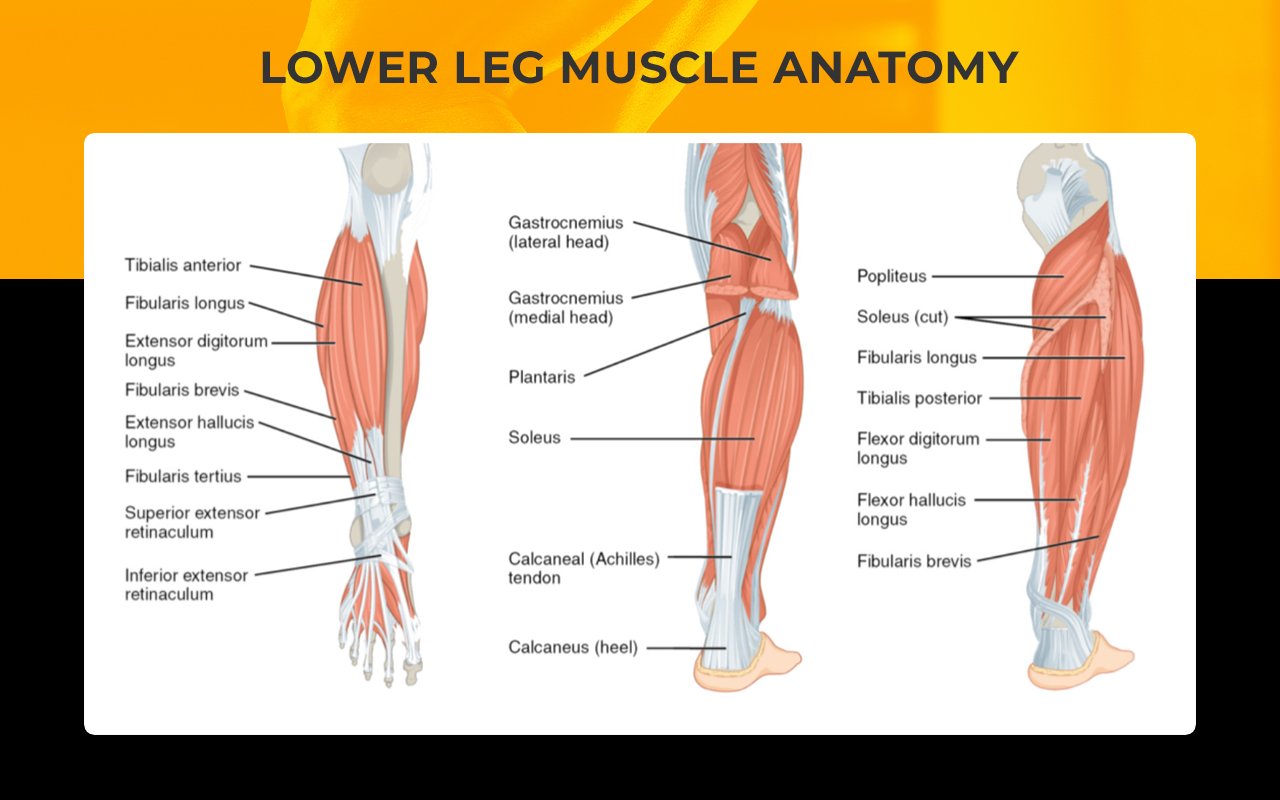Gym Workout For Legs! Leg Muscle Anatomy, Biomechanics, and a FREE Gym Routine by Online Personal Trainer Milos Tanasic
You've come to the right place if your objective is to shape and grow your leg muscles! This blog post will cover everything you need about gym workouts for your legs. I will start by explaining the anatomy of the leg muscles, including their functions and biomechanics. Then, I will show you how to program your training based on your individual needs. Next, we'll discuss nutrition requirements for effective leg muscle growth. And finally, we'll provide a comprehensive list of exercises targeting all lower body areas. So whether you're a beginner or an experienced lifter, there's something for everyone in this article!
Leg Muscle Anatomy
There are four major muscle groups in our lower body:
Quadriceps
Hamstrings
Gluteals
Calves
Our legs include multiple muscles that extend, flex, bend, abduct, adduct, and rotate our legs and allow high-quality movement.
The leg workout I will share below will focus on training all the main muscle groups, and it can be used for beginners and advanced lifters. I will explain how to make it appropriate for your fitness level.
Understanding how to program your leg workouts is crucial if you want to ensure safe and effective training, which will ultimately lead you closer to achieving your health and fitness goals.
If, for some reason, you have never stepped foot inside a gym or you have a hard time committing to a program, you can look into working with one of our online personal trainers until you are ready to get things done on your own. To find out more about our online training, click here!
Let us now take a closer look at the big muscle groups!
Quadriceps
The quadriceps femoris is a muscle located in front of the thigh, and it has four separate heads:
1. Rectus femoris
Origin - front of the pelvic bone
Insertion - base of the patella
2. Vastus medialis
Origin - the outer edge of the femur
Insertion - base of the patella
3. Vastus lateralis
Origin - the outer edge of the femur
Insertion - base of the patella
4. Vastus intermedius
Origin - the front part of the femur
Insertion - base of the patella
All the heads of the quadriceps muscle merge and attach to the knee cap, and then via the patellar ligament, they attach to the tibial tuberosity just under the knee joint.
What is the primary function of the quadriceps muscle?
The primary function of the quadriceps is to extend the knee and straighten the leg.
Hamstrings
Hamstrings are located behind the thigh and are made of 3 muscles. All three muscles originate from the ischium bone on the pelvis.
The Biceps femoris has a long and short head.
Long head
Origin - ischial tuberosity on the pelvis
Insertion - fibula bone just under the knee
Short head
Origin - the outer part of the middle of the femur
Insertion - fibula bone just under the knee
Semimembranosus
Origin - ischial tuberosity on the pelvis
Insertion - upper tibia behind the knee (medial tibial condyle)
Semitendinosus
Origin - ischial tuberosity on the pelvis
Insertion - the upper tibia bone adjacent to semimembranosus.
Gluteals
The largest muscle in the human body is the gluteus Maximus which originates from a large area on the rear of the pelvic bone, passes down behind the hip joint, and attaches to the upper femur.
The role of this muscle is to cause hip extension.
The thigh has other muscles, which we will list below:
Hip adductors (Inner thigh): Gracilis; adductor longus, magnus, and brevis
Hip abductors: Tensor fascia latae; gluteus medius and minimus
Hip flexors: Sartorius, Iliopsoas, rectus femoris
Calves
Two main muscles in the lower leg are both calf muscles:
The gastrocnemius is the visible muscle of the calf. It has two heads (medial and lateral).
Origin - both heads originate from the epicondyle of the femur (medial and lateral epicondyle)
Insertion - into the heel via the Achilles tendon (attached to the calcaneus bone)
The soleus is the second muscle of the calves, which is not visible due to it being behind the gastrocnemius.
Origin - head of the fibula and soleal line of the tibia
Insertion - calcaneus via the Achilles tendon
There are more muscles in the lower limbs, like tibialis anterior, tibialis posterior, peroneus longus and brevis, and others. Still, this blog will only focus on the main muscle groups.
How to program your leg workout based on your biomechanics?
Do you have to perform the barbell squat, deadlift, or walking lunges if you do not have the biomechanics or ankle mobility and stability to perform those safely and effectively?
In short, the answer is NO! You can get an excellent growth stimulus by doing the leg press, single leg presses, a Bulgarian split squat variation with assistance, and other exercises where you can efficiently load the working muscles. You do not have to utilize the exercises above if they are not suitable for you.
Pro Tip - when it comes to bodybuilding, understand that mechanical tension is the most important for muscle growth which means that ten effective reps with the full range on a 150kg leg press are more effective than ten half reps with a 30kg barbell.
Nutrition tips that will help you efficiently put muscle mass on your leg muscles.
Training is only one part of the equation for getting great results. If you want to optimize your training, knowing which are the best leg exercises, whether to program the leg press machine after the single leg deadlift, or whether to focus on 6-10 or 10-15 reps is not by itself enough to guarantee results.
As you can already assume, nutrition plays a crucial role in getting the muscle gain you want! To grow muscle, you have to be in a caloric surplus, and you need sufficient protein and carbs to provide your body with the building blocks and fuel to recover and grow efficiently. That will also allow you to progress your workouts and increase your training capacity, which will further help you build muscle.
If your objective is to tone and reduce the size of your legs, you need to be in a caloric deficit. The more you reduce your calories, the more critical it is to increase your protein intake to preserve muscle loss.
You need to be a beginner or someone who never had a proper training stimulus to burn fat and grow a significant amount of muscle tissue.
How to program for lagging body parts, muscular endurance, and leg strength?
Recommendations for improving lagging body parts
If you have a body part that you would like to improve, your training should focus on getting the most quality work around that specific body part. Here are a few tips to make that happen:
You should program that specific body part more frequently than other muscle groups (2-3x per week as long as you can recover).
Introduce exercises where you can increase mechanical tension (weight on the bar) efficiently and exercises where you can feel the muscle you are working. Remember, mechanical tension is king, but if you can find exercises to optimize the tension and the feeling, that is a win-win situation!
Introduce warm-up exercises and muscle activation drills that can help you pump a bit of blood into the target muscle before heading into heavy straight sets.
Introduce higher calorie meals pre and post-workouts in which you focus on your lagging body part.
Make sure you are in a small surplus if your objective is to grow a lagging body part.
Train the muscle only when it's fully recovered, and make sure you are both physically and mentally prepared to execute each rep with 100% focus!
What is the difference between programming for strength training and muscle endurance?
When programming for strength, you can use the following suggestions:
3-4 minute breaks between sets
1-6 reps per set
focus on compound movements
lower volume than when programming for muscle endurance
do not chase the pump and burn
When programming for muscle endurance, you can use the following suggestions:
30-120 seconds break between sets
12-25 reps per set
both compound and isolation movements can be used (resistance machines might be safer to use)
higher volume than when programming for strength
chase the pump and burn; embrace the pain
Pro Tip - if your objective is to achieve muscle growth, endurance, and strength, you can focus on compound movements in the 6-12 rep range for your main lifts, followed by a few exercises in the 15-25 rep range.
Gym workout for legs
Warm Up
1. Reverse box step down - Demo
Starting position - feet hip-width on the box
Action - reverse step down, controlled eccentric, push the hip of the working leg back and make sure your foot arch remains solid, lean forward, and extend arms to create balance.
Sets/Reps - 3/8 per leg
2. Lateral banded step out - Demo
Starting position - feet shoulder-width apart, knees slightly bent, torso leaning forward, and a neutral back position with an elastic band around the mid of both feet.
Action - lateral steps, lead with the left foot if you move to the left side. Ensure that your back remains neutral and your torso is leaning forward as you move to the side, keep weight on the outside of the foot and maintain a strong foot arch.
Sets/Reps - 3/10 per leg
3. Stability ball hamstring curls - Demo
Starting Position - feet fully flexed at the knees, elbows firmly driving into the ground, and heels pushing into the stability ball.
Action - lift the hips, contract the gluteal muscles, and perform an extension at the knee joint, then reverse the movement until you get back into the beginning position.
Sets/Reps - 3/10-12
The main portion of the workout
Leg press - neutral stance - Demo
Starting position - feet shoulder width apart, hold tight into the handles, and inhale before lowering the weights.
ACtion - hold your breath while lowering the weight into full knee flexion, then exhale once you are past halfway up. Constantly pull yourself into the seat so your butt pushes into the seat to avoid hip flexion during the leg press.
Sets/Reps - 3-4/8-12
If you don't have access to a leg press, you can utilize the following exercises as replacements:
Heel elevated goblet squat
Pendulum squat
Hack squat
2. Bulgarian Split Squat - Demo
Starting position - back leg elevated, torso leaning forward and maintaining a neutral back.
Action - perform a knee flexion in the front leg, allowing the knee to go as much forward as possible without lifting the heel of the front leg. Drive back up and exhale once you pass the first half of the movement on the way up.
Sets/Reps - 3/8-12 per leg
3. Laying down hamstring curls - Demo
Starting position - hold tight onto the handles, keep back neutral and drive your thighs into the pad; inhale before you initiate the movement.
Action - perform a knee flexion while holding the breath, pause at the top and control the eccentric while exhaling.
Sets/Reps - 3-4/8-12
4. Curved back hyperextension - Demo
Starting position - chin tucked in, look into your chest and maintain a curved back.
Action - drive the heels and thighs into the ground and the padding and contract your hamstrings and glutes while maintaining a curved back throughout the movement. All the movement should happen at the hips to avoid lower back engagement.
Sets/Reps - 3-4/15+ , add weights to intensify
If the above machine is unavailable, you can perform the following exercises:
Stiff leg deadlift
Single leg deadlift
5. Standing calf raise machine - Demo
Starting position - position your shoulders under the pads so that you are comfortable and keep your legs straight or knees bent slightly. Position the foot, so the toes and the upper portion of the foot are on the platform.
Action - drive your heel as far down as possible to achieve a full stretch pause, then drive up into full flexion at the knee joint and pause at the top.
Sets/Reps - 3-5/12-15
If you do not have access to the standing calf raises machine, you can perform the following exercises:
single leg dumbbell plate elevated calf raises
seated calf raise machine
Common questions and answers
Can I perform the deadlift and the barbell squat on the same day?
The answer to this question is it depends. It depends on multiple factors. I will list the cases in which it is advisable to program both on the same day and when it is not a good option.
When it could be a good option:
low training frequency - 2-3 weekly workouts
one lower body workout per week
hypertrophy and muscle endurance-focused program
When it might not be advisable:
high training frequency 4-6 weekly workouts
training focused on strength development (heavy weights, low reps)
whenever you have the opportunity to, program them on separate days
Can you create a bodyweight exercise program?
Yes, we have a database of over 250 exercises, including body weight, free weights, and resistance machines.
What is the online personal trainer cost per month?
We have generic programs and personalized programs. We also have available nutrition coaches. The price will vary depending on your requirements.
What is the best workout routine for growing my glutes?
This is a very complex question; however, I will provide some tips that can help you get on the right track:
make sure you are in a caloric surplus
get stronger on your main lifts
combine mechanical tension and high-rep exercises that pump lots of blood and give you that good feel/burn in the working muscles
train the gluts more frequently
give yourself enough time to recover between sessions
What are the best free weights exercises for growing my quads and glutes?
If you can execute it safely and progress the weight efficiently, then the barbell squat is the most efficient exercise to grow your quads and glutes. Combined with the Bulgarian split squat, sissy squats, and hip thrust, you will get in a perfect combination of exercises that will help you optimize your personal training.
Are you perhaps looking for an excellent online trainer?
If you want to work with fitness professionals with a proven track record of helping hundreds of people reach their personal training goals, book your FREE consultation today!
Are you looking for a comprehensive guide to female training?
Suppose you are a female trainee or perhaps a personal trainer looking to improve your personal training skills. In that case, our Beach Body Training guide must become a part of your educational collection. Created both for beginners and advanced lifters, this comprehensive guide to female training includes the following:
Exercise library with instructions
training based on your biomechanics
how to program your training
training for lagging body parts
sample programs for both beginners and advanced lifters, and more!
Click here to find out more!
Fortius Dubai Fitness Services:
Learn more with Dubai’s Leading Fitness and Wellness Blog:
#StayStrong #BeFortius











